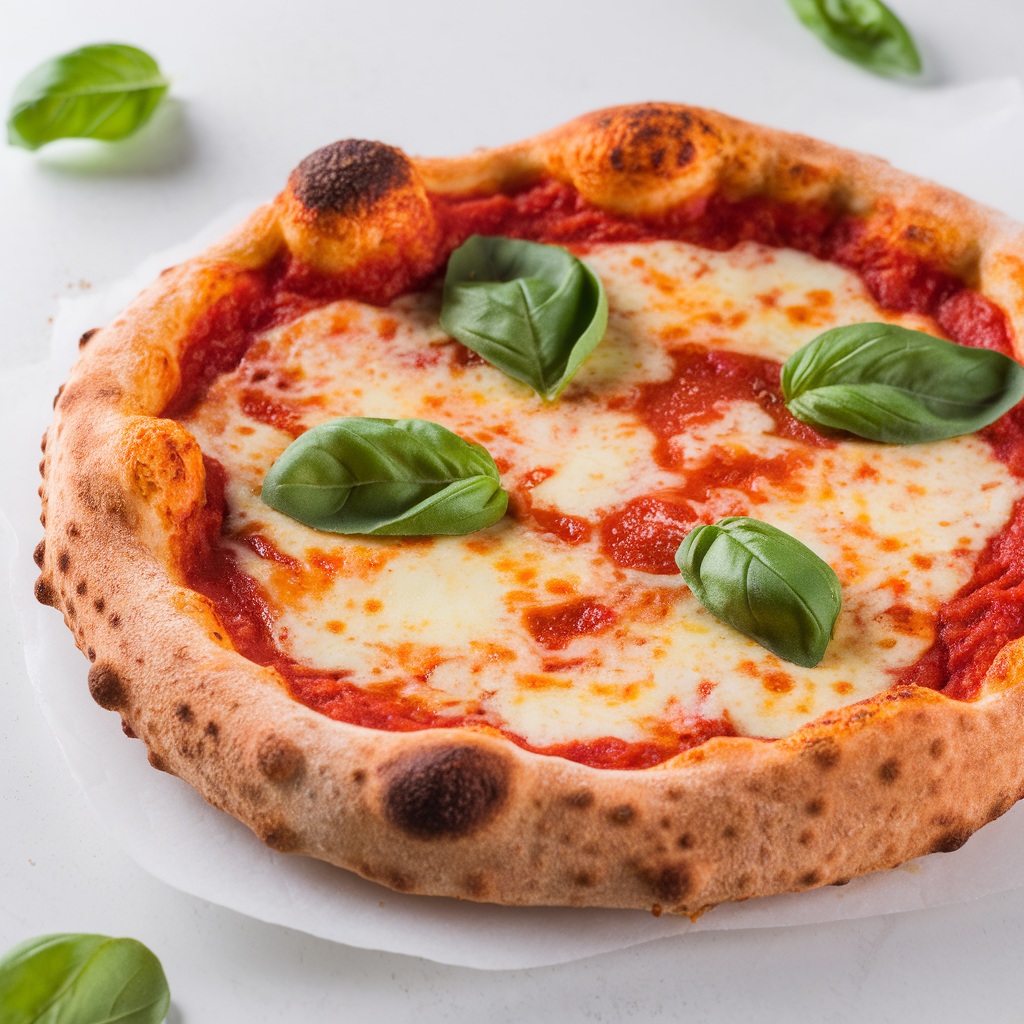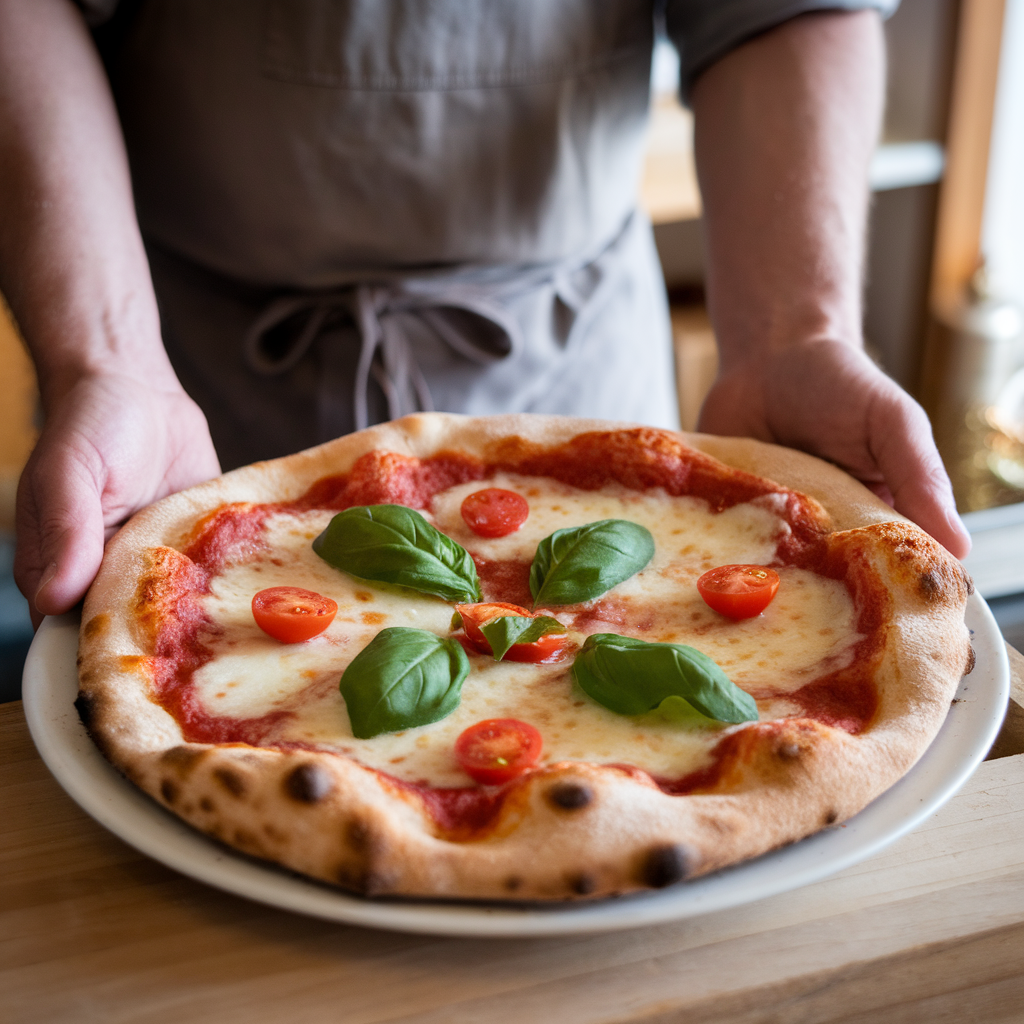
Pizza is a beloved dish worldwide, and it’s no wonder why – it’s customizable, comforting, and delicious. For those with gluten sensitivities or those who simply want to enjoy a gluten-free diet, finding the perfect pizza crust can be a challenge. If you’ve been craving the chewy, crispy texture of pizza but need a gluten-free option, look no further. This guide will help you create the best gluten-free pizza crust from scratch, with variations such as gluten-free zucchini pizza crust, gluten-free pan pizza crust, and gluten-free egg-free pizza crust.
In this article, we’ll provide a step-by-step process for creating your own gluten-free pizza dough, tips on making it perfectly chewy and crispy, and ways to adapt the recipe to your needs. Whether you prefer a healthy gluten-free pizza crust, a chewy gluten-free pizza crust, or a gluten-free artisan bread base for your pizza, we’ve got you covered. We’ll also delve into variations, including gluten-free pizza crust recipes that accommodate dietary preferences and requirements.
Why Choose a Gluten-Free Pizza Crust?
Before we dive into the recipe, it’s essential to understand why someone might choose a gluten-free pizza crust over traditional pizza dough. Gluten is a protein found in wheat, barley, and rye, and for individuals with celiac disease or gluten sensitivity, consuming gluten can cause significant health problems. Even for those without these conditions, following a gluten-free diet can offer benefits such as improved digestion, better energy levels, and fewer bloating episodes.
Gluten-free pizza dough doesn’t have to compromise on taste or texture, and you can easily create a crust that’s chewy, crispy, and satisfying. By using a combination of gluten-free flours and other ingredients, you can create a crust that mimics the qualities of traditional pizza while avoiding gluten. Whether you have an intolerance or are simply looking for a healthy alternative, this gluten-free pizza dough recipe offers a delicious solution.
What Makes the Best Gluten-Free Pizza Crust?
A great gluten-free pizza crust should have a few key characteristics:
- Chewy texture: The best gluten-free pizza crust should have a chewy, satisfying texture, similar to traditional pizza dough.
- Crispiness: The crust should be crisp on the outside while remaining soft and tender on the inside.
- Health-conscious ingredients: A healthy gluten-free pizza crust should incorporate nutritious ingredients, such as vegetables and whole grains, to provide extra fiber and essential nutrients.
- Flexibility: The recipe should allow for variations, such as a gluten-free zucchini pizza crust or a gluten-free pan pizza crust, so that you can experiment and cater to different tastes.
This recipe is versatile and customizable, offering various methods for achieving the ideal texture and flavor. Let’s break down the ingredients and steps needed to create the perfect gluten-free pizza crust.

The Best Gluten-Free Pizza Crust Recipe
This gluten-free pizza crust is simple to prepare and requires only a handful of ingredients. With just a little effort, you can enjoy a delicious pizza that’s 100% gluten-free and full of flavor.
Ingredients:
- 2 cups gluten-free all-purpose flour (ensure it contains xanthan gum for structure)
- 1 teaspoon instant dry yeast
- 1 teaspoon salt
- 1 tablespoon olive oil
- 1 teaspoon apple cider vinegar
- 3/4 cup warm water (around 110°F or 43°C)
- 1 tablespoon honey or sugar
- Optional: 1/4 cup ground flaxseeds (for added fiber and nutrients)
Instructions:
- Activate the Yeast: Begin by combining the warm water, honey (or sugar), and yeast in a small bowl. Stir gently and let the mixture sit for about 5-10 minutes, allowing the yeast to activate. When the mixture becomes frothy and bubbly, you’ll know the yeast is ready to use.
- Mix Dry Ingredients: In a large mixing bowl, combine the gluten-free all-purpose flour and salt. If you’re adding ground flaxseeds for extra fiber, include them at this stage. The flaxseeds will give your pizza crust an added boost of nutrients.
- Combine Wet and Dry Ingredients: Once the yeast mixture is frothy, pour it into the bowl with the dry ingredients. Add the olive oil and apple cider vinegar. Stir the ingredients together with a wooden spoon or in a stand mixer using the dough hook until everything is well combined.
- Knead the Dough: Transfer the dough onto a lightly floured surface and knead it for 2-3 minutes. It will be sticky, so feel free to dust your hands or the surface with additional gluten-free flour as needed. This step helps to activate the ingredients and creates a dough that’s smooth and elastic.
- Allow the Dough to Rise: Place the dough into a lightly oiled bowl and cover it with a clean cloth. Let it rise in a warm place for 30 minutes to 1 hour. The dough should double in size during this time, which will give it a light and airy texture when baked.
- Preheat the Oven: Preheat your oven to 475°F (245°C). If you have a pizza stone, place it in the oven during preheating for an extra crispy crust.
- Shape the Pizza Crust: After the dough has risen, remove it from the bowl and place it onto a piece of parchment paper. Roll it out using a rolling pin or shape it with your hands into a round or rectangular shape, depending on your preference. For a gluten-free pan pizza crust, press the dough into a well-oiled cast-iron skillet or deep baking dish to form a thick, soft crust.
- Bake the Crust: Place the shaped dough onto a baking sheet or heated pizza stone and bake it for 12-15 minutes (for a thin crust) or 18-20 minutes (for a thicker pan-style crust). The crust should be golden brown with a slight crispness around the edges. Keep an eye on the crust to ensure it doesn’t overbake.
- Add Toppings: Once the crust is golden and baked to your liking, remove it from the oven. Add your favorite toppings, whether it’s classic tomato sauce and cheese or more adventurous options like veggies, meat, or even vegan cheese. Return the pizza to the oven for an additional 5-10 minutes, allowing the toppings to melt and bake.
- Enjoy: Allow the pizza to cool slightly before slicing and serving. Enjoy your gluten-free pizza crust with your favorite toppings and a side of fresh salad for a complete meal.

Variations on the Gluten-Free Pizza Crust Recipe
While the basic recipe is delicious on its own, here are some variations you can try to cater to different tastes and dietary needs.
Gluten-Free Zucchini Pizza Crust
If you want to add some extra vegetables to your pizza, try making a gluten-free zucchini pizza crust. Zucchini provides additional moisture and flavor while keeping the crust healthy. Grate one medium zucchini and squeeze out the excess moisture with a clean kitchen towel or cheesecloth. Add the grated zucchini to the dough mixture, and follow the rest of the recipe as usual. The zucchini adds a subtle flavor and keeps the crust soft and light.
Gluten-Free Pan Pizza Crust
For those who prefer a thicker, more substantial crust, try a gluten-free pan pizza crust. Simply press the dough into a well-oiled pan, such as a cast-iron skillet or a round cake pan. The dough will rise and bake into a fluffy, chewy crust with crispy edges. This variation is perfect for a hearty meal and is reminiscent of deep-dish pizza.
Gluten-Free Egg-Free Pizza Crust
For those with egg allergies or who prefer a vegan version, you can easily make this recipe egg-free. Simply omit the egg and replace it with additional flaxseeds or chia seeds. For every egg you’re replacing, use 1 tablespoon of ground flaxseeds mixed with 3 tablespoons of water. Let it sit for 5 minutes to create a gel-like consistency. This will help bind the dough together and provide a texture similar to traditional pizza dough.
Gluten-Free Artisan Bread Pizza Crust
If you’re in the mood for something more rustic, try making a gluten-free artisan bread pizza crust. This crust is slightly thicker and has a chewy texture with a golden, crispy exterior. Use the same dough recipe, but shape it into a free-form oval or round shape on a baking sheet, instead of a pizza stone. The dough will rise slightly, creating a thicker, bread-like base for your toppings.

Tips for Perfecting Your Gluten-Free Pizza Crust
- Use a high-quality gluten-free flour blend: Look for a blend that contains xanthan gum or guar gum, which help provide structure to the dough. The right blend of flours is key to achieving the ideal pizza texture.
- Hydrate the dough properly: Gluten-free dough can sometimes be dry, so make sure to add enough water. If the dough feels too sticky, you can add a little more flour.
- Don’t skip the resting time: Allowing the dough to rest and rise gives the yeast time to activate and the dough time to develop its structure.
- Preheat your oven: A hot oven is crucial for getting that crispy, golden crust. Ensure your oven is preheated to the right temperature before baking.
- Experiment with toppings: Once you’ve mastered the perfect gluten-free pizza crust recipe, feel free to experiment with different toppings. Try making a gluten-free pizza dough using roasted veggies, dairy-free cheese, or even a drizzle of balsamic glaze for a unique twist.
Why This Recipe is the Best Gluten-Free Pizza Crust
This recipe for gluten-free pizza dough is the ideal solution for anyone craving pizza without the gluten. The dough is perfectly chewy, soft, and crispy, mimicking the texture of traditional pizza. It’s versatile enough to allow for various types of pizzas, including gluten-free zucchini pizza crust, gluten-free pan pizza crust, and gluten-free artisan bread pizza crusts.
By using healthy gluten-free pizza crust ingredients like flaxseeds, olive oil, and apple cider vinegar, this pizza dough not only provides a healthier option for those with gluten sensitivities but also ensures that every bite is full of flavor. Whether you’re looking for a simple gluten-free pizza crust recipe or want to experiment with different textures and flavors, this recipe is a great starting point.
Conclusion
Making your own gluten-free pizza crust from scratch is easier than you think, and the results are absolutely worth it. With this recipe, you can enjoy pizza just like everyone else, without worrying about gluten. Whether you’re making a gluten-free zucchini pizza crust, a thick and chewy gluten-free pan pizza crust, or a rustic gluten-free artisan bread pizza, this recipe provides endless possibilities for creating the perfect pizza.
Next time you’re craving pizza, skip the store-bought gluten-free options and try making your own chewy gluten-free pizza crust at home. With a few simple ingredients and a bit of patience, you’ll have a delicious, homemade pizza that’s gluten-free, healthy, and absolutely satisfying.




